Themed collection Synergy between Experiment and Theory

Front cover
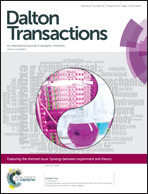
Inside front cover

Synergy between experiment and theory
Welcome to this issue of Dalton Transactions featuring the themed issue “Synergy between experiment and theory”.

Dalton Trans., 2014,43, 11092-11092
https://doi.org/10.1039/C4DT90087A
Synergy between experimental and theoretical methods in the exploration of homogeneous transition metal catalysis
In this Perspective, we will focus on the use of both experimental and theoretical methods in the exploration of reaction mechanisms in homogeneous transition metal catalysis. The current state-of-the-art is highlighted using examples from the literature with particular focus on the synergy between experiment and theory.
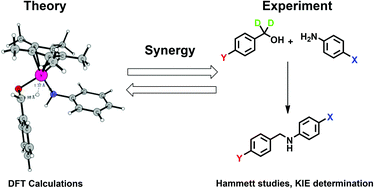
Dalton Trans., 2014,43, 11093-11105
https://doi.org/10.1039/C4DT00342J
A theoretical analysis of the phosphorescence efficiencies of Cu(I) complexes
We herein report a theoretical analysis using density functional theory (DFT) and time-dependent DFT (TDDFT) to study the electronic structures and photophysical properties of mixed-ligand Cu(I) complexes.
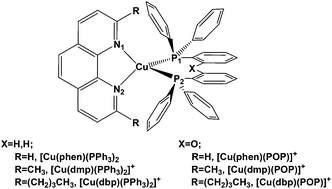
Dalton Trans., 2014,43, 11252-11259
https://doi.org/10.1039/C4DT00245H
Mechanistic insight into the ruthenium-catalysed anti-Markovnikov hydration of alkynes using a self-assembled complex: a crucial role for ligand-assisted proton shuttle processes
A combined computational and experimental study into the mechanism of the anti-Markovnikov hydration of phenylacetylene by a self-assembled ligand complex.

Dalton Trans., 2014,43, 11277-11285
https://doi.org/10.1039/C4DT00712C
Americium(III) and europium(III) complex formation with lactate at elevated temperatures studied by spectroscopy and quantum chemical calculations
Spectroscopic techniques (NMR and ATR FT-IR) in combination with calculations (DFT) show that the hydroxyl group of the lactate is deprotonated under complex formation with Eu(III).

Dalton Trans., 2014,43, 11221-11232
https://doi.org/10.1039/C4DT00440J
Theoretical insights into the effect of amine and phosphine decoration on the photoluminescence of copper(I) and silver(I) coordination polymers
Ligand decoration shifts the excitation and emission spectra of coinage metal cyanides. DFT and TD-DFT calculations are used to identify the MOs involved the transitions that contribute to photoluminescence.
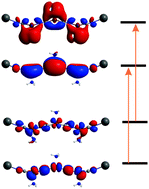
Dalton Trans., 2014,43, 11243-11251
https://doi.org/10.1039/C4DT00313F
Synthesis, photovoltaic performances and TD-DFT modeling of push–pull diacetylide platinum complexes in TiO2 based dye-sensitized solar cells
Five new Pt-containing dyes have been synthesised and characterised in the framework of DSSC applications.

Dalton Trans., 2014,43, 11233-11242
https://doi.org/10.1039/C4DT00301B
Comparing Ru and Fe-catalyzed olefin metathesis
To replace Ru by Fe in olefin metathesis, a dream?
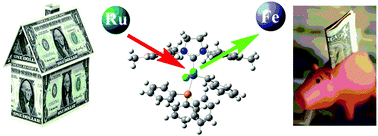
Dalton Trans., 2014,43, 11216-11220
https://doi.org/10.1039/C4DT00325J
Chiral transition-metal complexes as Brønsted-acid catalysts for the asymmetric Friedel–Crafts hydroxyalkylation of indoles
Water is the catalyst! The transition metal complex “only” modulates its acidity and provides a chiral environment.

Dalton Trans., 2014,43, 11260-11268
https://doi.org/10.1039/C4DT00556B
A DFT study of ruthenium pincer carboxylate complexes as potential catalysts for the direct carboxylation of arenes with CO2 – meridional versus facial coordination
The potential catalytic activity of ruthenium pincer benzoate complexes as [Ru(PNP)(PhCOO)2] I depends crucially on the fac/mer-isomerism of such complexes.
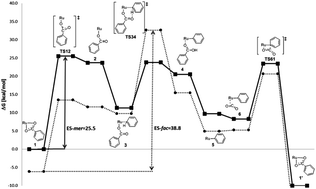
Dalton Trans., 2014,43, 11180-11189
https://doi.org/10.1039/C4DT00294F
Charge transfer processes: the role of optimized molecular orbitals
The influence of the molecular orbitals on charge transfer (CT) reactions is analyzed through wave function-based calculations.
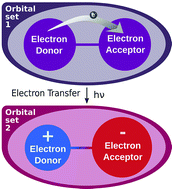
Dalton Trans., 2014,43, 11209-11215
https://doi.org/10.1039/C4DT00471J
Formation of cyanates in low-valent uranium chemistry: a synergistic experimental/theoretical study
Cyanate formation appears to occur at a monometallic species but is also shown to induce possible formation of a mix-valence complex.

Dalton Trans., 2014,43, 11202-11208
https://doi.org/10.1039/C4DT00618F
Theory-assisted development of a robust and Z-selective olefin metathesis catalyst
A tight interplay between theory and experiment has led to the development of a new, highly Z-selective ruthenium-based olefin metathesis catalyst that can be used in air, with unpurified and non-degassed substrates and solvents, and in the presence of acids.
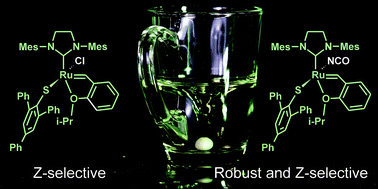
Dalton Trans., 2014,43, 11106-11117
https://doi.org/10.1039/C4DT00409D
C–H and C–O bond activation with a rhodium(I) β-diiminate complex
LRh(COE) “extracts” CO from oxirane, methyloxirane and 2,2-dimethyloxirane; calculations indicate different initial steps for oxirane and dimethyloxirane activation.
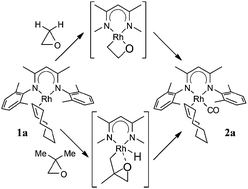
Dalton Trans., 2014,43, 11286-11294
https://doi.org/10.1039/C4DT00309H
Computational studies of the unusual water adduct [Cp2TiMe(OH2)]+: the roles of the solvent and the counterion
Detailed DFT calculations revealed that two molecules of CH2Cl2 are required to obtain a good comparison with the experimental NMR data.
![Graphical abstract: Computational studies of the unusual water adduct [Cp2TiMe(OH2)]+: the roles of the solvent and the counterion](/en/Image/Get?imageInfo.ImageType=GA&imageInfo.ImageIdentifier.ManuscriptID=C4DT00310A&imageInfo.ImageIdentifier.Year=2014)
Dalton Trans., 2014,43, 11195-11201
https://doi.org/10.1039/C4DT00310A
The “innocent” role of Sc3+ on a non-heme Fe catalyst in an O2 environment
The formation of an oxoiron(IV) complex is achieved from iron(II) just pumping electrons and oxygen, with a particular innocent role of Sc3+.
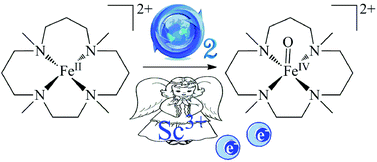
Dalton Trans., 2014,43, 11190-11194
https://doi.org/10.1039/C4DT00321G
Combined DFT and experimental studies of C–C and C–X elimination reactions promoted by a chelating phosphine–alkene ligand: the key role of penta-coordinate PdII
Investigation of reductive elimination process from chelated [PdIIMeX(L1)] complexes highlights the key role of penta-coordinate intermediates.
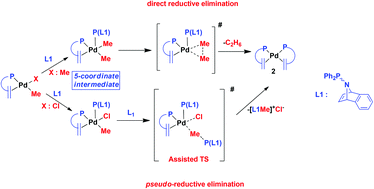
Dalton Trans., 2014,43, 11165-11179
https://doi.org/10.1039/C4DT00340C
Six-coordinate high-spin iron(II) complexes with bidentate PN ligands based on 2-aminopyridine – new Fe(II) spin crossover systems
Octahedral 18e iron(II) complexes of the type [Fe(PNR-Ph)2X2] are prepared and characterized.
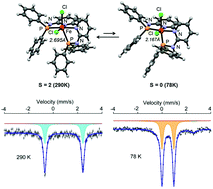
Dalton Trans., 2014,43, 11152-11164
https://doi.org/10.1039/C4DT00186A
The use of localised orbitals for the bonding and mechanistic analysis of organometallic compounds
Orbital localization reveals bonding and oxidation states of the metal center in organometallic complexes.
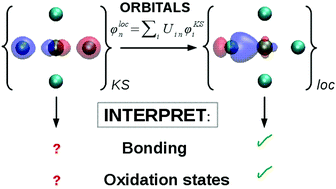
Dalton Trans., 2014,43, 11145-11151
https://doi.org/10.1039/C4DT00251B
Double exchange in a mixed-valent octanuclear iron cluster, [Fe8(μ4-O)4(μ-4-Cl-pz)12Cl4]−
The influence of double exchange on the magnetic properties of a mixed-valent Fe4O8 cluster is highly dependent on temperature.
![Graphical abstract: Double exchange in a mixed-valent octanuclear iron cluster, [Fe8(μ4-O)4(μ-4-Cl-pz)12Cl4]−](/en/Image/Get?imageInfo.ImageType=GA&imageInfo.ImageIdentifier.ManuscriptID=C4DT00020J&imageInfo.ImageIdentifier.Year=2014)
Dalton Trans., 2014,43, 11269-11276
https://doi.org/10.1039/C4DT00020J
DFT studies on the mechanism of palladium-catalyzed carbon–silicon cleavage for the synthesis of benzosilole derivatives
DFT calculations have been carried out to study the detailed mechanism of Pd-catalyzed intermolecular coupling reactions of 2-silylaryl bromides with alkynes via selective cleavage of C(sp3)–Si bonds.

Dalton Trans., 2014,43, 11138-11144
https://doi.org/10.1039/C3DT53391C
A combined experimental and computational study of fluxional processes in sigma amine–borane complexes of rhodium and iridium
A study on the fluxional processes involving the M–H and B–H positions in the sigma amine–borane complexes [M(PCy3)2(H)2(η2-H3B·NMe3)][BArF4] (M = Rh, Ir) reveals relative rates for a variety of processes and the role the metal centre plays in influencing them.

Dalton Trans., 2014,43, 11118-11128
https://doi.org/10.1039/C3DT52771A
Structure of a uranyl peroxo complex in aqueous solution from first-principles molecular dynamics simulations
Complementing a recent potentiometric speciation study, Car–Parrinello molecular dynamics simulations are reported, which furnish insights into the structure of a prototypical uranyl peroxo complex in aqueous solution.
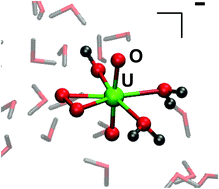
Dalton Trans., 2014,43, 11129-11137
https://doi.org/10.1039/C3DT52413B
About this collection
This themed issue, guest edited by Eric Clot, showcases how experimental and computational approaches can be simultaneously used to provide insight into chemical problems.